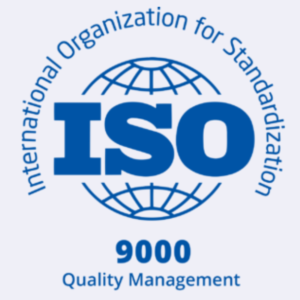Malaysians are going full-force on registering and implementing GST systems as it will be effective on 1st April 2015.
This post serve as part of our notes for our support team and clients.
We believe this may save time for some and hope it can help others.
Below is a summary of what we understand about GST (areas that we are interested in). 1xbet casino
- Langkawi, Tioman and Labuan are excluded from GST. They will be treated similar as overseas company. (ref)
- Business with annual turnover of ≥RM 500,000 (past or future) is required to register with RMC (Royal Malaysian Custom) for GST on or before 31/12/2014. A penalty will impose for any late registration. لعبة تربح فلوس (follow RMC schedule) (ref)
- If you have annual turnover below RM 5M and ≥RM500k, we are required to remit GST payments with the Form GST-03 on quarterly basis, above RM 5M, GST payments are performed on monthly basis.
- Software and other digital products (MP3, images, videos) is considered as service in GST. If we (a GST registered entity) purchase digital products (software, videos, photos) over the Internet, we need to pay GST. (ref)
- Quoted from Import Guide point 10: in the case of imported services, the GST liability shifts from the supplier to the recipient if the recipient’s fixed or business establishment or his usual place of residence is in Malaysia. Thus, we are required to pay GST when importing goods and services. There is even a calculator in RMC website.
- What is input tax? GST paid to supplier is not only on purchase, it can also be capital assets, printing & stationery, professional fee incurred.
- How about output tax? Output tax is not only imposed on sales but also include disposal of capital assets, free gift to customer and private usage.
- Types of supply definition:
- Zero-rated supply – Basic essential goods such as rice, fresh raw ingredients-vegetables, meat, water for domestic use, first 300kWh electricity for domestic use and export goods
- Exempt supply – residential building, life insurance, public transport, financial services, private health and education services. Water supply for domestic is exempted, electricity for domestic is limited to 200 units.
- Standard rate supply – goods or services which are not listed in either GST zero rated or exempt supply is subject to standard rate 6%.
- Mixed supply – an insurance company, who might be using the best CRM software for insurance agents, who sells life insurance and general insurance too. This is partial redemption on input tax where only applies to general insurance as life insurance is an exempt supply.
- Disregarded supply – warehousing scheme, certain supplies between companies which are registered under group registration.
- Out-of-scope supply-non-business transaction, sales of goods. Export sales is not GST taxable as its part of Out of Scope Supply. (ref)
- Deposits that are not supply related are not subjected to GST. Late interest charges are not applicable for GST. (ref)
- There is a 21-day rule, which is to ensure invoices are issued within 21 days after the supply took place. If the invoice failed to be issued within the time-frame, then the invoice is deemed to be the date of supply. Thus,we need to modify our invoice ( Tax Invoice) to include information required for GST to comply.
- For GST return for all input and output tax, we need to provide information as in GST Form-03 to submit our GST payments.
- When requested, we need to submit the GST Audit File (GAF) to Customs.
- Bad Debts (ref).Any invoices not paid by customer within 6 months can be considered bad debts in context of GST. The bad debts will require adjustment on the accounting system to reduce the GST payable. If payment is made after 6 months, then the invoice that was marked as bad debt should now be paid its GST portion.
We are using ProLine for our company’s accounting, which make it easier for us to support our clients using our software as well. While we are preparing the system to be GST compliance, here are areas we need to:
- Review all source of income and expenses.
- Decide on each income and expense source, is it exempted or not?
- Update to latest ProLine version.
- Testing it out – make a backup database before you proceed. افضل موقع مراهنات عربي
- Add a GL Code for GST Payables into your Chart of Accounts (under Liability section).
- Add / Update Item codes for transactions related to GST.
- Set 1/4/2015 and 6% on config system (if applicable) and test it out by creating a future dated invoice (invoice dated after 1/4/2015).
- Create Supplier Invoice (future dated)
- Review the reports
ProLine comes with transitional setting for GST, which means we can add effective date and percentage. This will be future-proof as when there is a revision on GST rate, all you need is to add the new date and effective rates and ProLine will use the new rates when the date comes.
While going through the GST requirements, we have identified some time-saving features that we are working on to enhance the software.
- Automated Tax Rate – based on customers or suppliers, the rates of GST will be included or excluded whether they are subjected to GST.
- Reports
- GST Report
- Deliveries without Invoices (monitor for 21 days rules)
- GRN without Invoices (monitor for 21 days rules)
- Generate GST Audit File (GAF)
Some good references that comes handy:
Disclaimer: We are not be held responsible for any GST non-compliances that you may face.
We suggest you take an active role to understand and take your own notes rather than depends solely on someone else to do it for you.
What are you views on this?
Leave a comment below to share your views.







